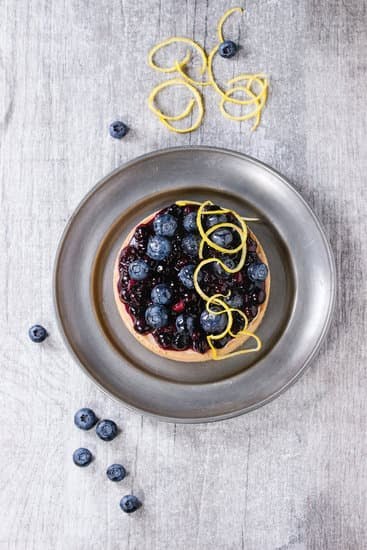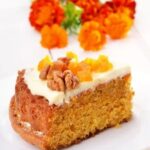When it comes to cake decorating, one of the most crucial factors to consider is the consistency of the icing. Whether you’re a professional cake decorator or a novice baker, finding the right consistency for your icing can make or break your cake design.
However, achieving the perfect consistency can be quite challenging, and many bakers struggle with icing that is either too thin or too thick. In this article, we will explore the role of icing consistency in cake decorating and address a commonly asked question – can you thicken cake decorators icing with flour?
Before we delve into whether flour can be used as a potential solution for thickening icing, let’s first establish why icing consistency is so important in cake decorating. Different techniques and designs require specific consistencies of icing, whether it’s for creating delicate piped decorations or smoothly covering an entire cake. Having control over your icing’s thickness allows you to achieve precise details or to achieve a smooth finish on your cakes.
However, achieving the perfect consistency can be tricky. Many bakers have experienced frustration when their icing turns out too runny or doesn’t hold its shape when piped onto a cake. This often leads them to explore different methods and ingredients for thickening their icing. One such option is using flour as a thickening agent. In this article, we will examine whether flour is a viable solution for achieving the desired thickness in cake decorators icing.
Ready to dive deeper? In the next section, we will discuss the basics of cake decorators icing, including its types, usage, and why achieving the ideal consistency is crucial for various decorating techniques.
The Basics of Cake Decorators Icing
When it comes to cake decorating, icing plays a crucial role in achieving the desired aesthetic and taste. There are several types of icing that can be used for cake decoration, including buttercream, royal icing, and fondant. Each type has its own unique characteristics and uses.
But no matter what type of icing you choose to use, achieving the right consistency is essential for successful cake decorating. The consistency of the icing affects how it spreads on the cake, holds its shape when piped or molded, and even how it tastes. Different cake decorating techniques require different consistencies of icing.
For example, if you’re doing intricate piping work or creating delicate decorations, a thicker consistency is needed to maintain the shape and definition. On the other hand, if you’re covering a cake with smooth frosting or applying a thin glaze, a thinner consistency is necessary.
To achieve the perfect consistency for your icing, there are a few tips you can follow. First, start with room temperature ingredients as they mix more easily and evenly. Second, gradually add liquid (such as milk or water) to achieve the desired thickness. Add small amounts at a time and mix well before adding more.
Additionally, using an electric mixer can help in achieving a smooth and consistent texture while incorporating air into the mixture to make it lighter. Keep in mind that different types of icings may require different techniques for achieving optimal consistency.
Why Flour as a Thickening Agent for Icing?
When it comes to thickening agents for icing, flour is often overlooked in favor of more traditional options like cornstarch or powdered sugar. However, flour can actually be a viable option for thickening cake decorators icing. In this section, we will explore why flour can be used as a thickening agent, its pros and cons, and how it affects the texture, taste, and stability of icing.
Exploring Traditional and Unconventional Thickening Agents
When it comes to thickening icing, bakers often turn to traditional options such as cornstarch or powdered sugar. These ingredients are known for their ability to add volume and thickness to frosting without altering the flavor too much. However, there are also unconventional options worth considering.
Using flour as a thickening agent in icing is one such unconventional method. While flour is typically associated with baking cakes rather than making icing, it can serve as an effective thickener when used correctly. By understanding the pros and cons of using flour in your icing recipe, you can make an informed decision about whether to give it a try.
Pros and Cons of Using Flour
One advantage of using flour as a thickening agent is its availability. Flour is a staple ingredient in most kitchens, making it easily accessible when you find yourself in need of a quick fix for thin icing.
Flour also adds stability to icing due to its gluten content. The proteins in flour bind together when mixed with liquids, creating a thicker consistency that holds up well during decoration. Additionally, flour doesn’t significantly alter the taste of the icing compared to alternatives like cornstarch or powdered sugar.
However, there are potential downsides to consider when using flour as a thickener for icing. One drawback is that adding too much flour can result in a pasty or grainy texture. It’s crucial to carefully measure and gradually add small amounts of flour until the desired thickness is achieved. Additionally, if you’re looking for a pure white icing, using flour may result in a slightly off-white color due to its natural yellow tint.
Understanding both the benefits and drawbacks of using flour as a thickening agent will help you decide if it’s the right choice for your cake decorators icing recipe. Experimenting with different options can yield exciting results and allow you to create unique textures and consistencies for your cake decorations.
The Science Behind Using Flour to Thicken Icing
When it comes to thickening cake decorators icing, using flour as a thickening agent may not be the first choice that comes to mind. However, understanding the science behind this method can help you achieve the desired consistency for your icing.
Flour is a commonly used thickening agent in cooking and baking, thanks to its unique properties. It contains proteins called gluten-forming proteins, which are responsible for giving structure and elasticity to baked goods. When flour is added to a liquid such as icing, these proteins absorb the liquid and form a gel-like substance. This gel helps thicken the icing and gives it a smoother texture.
However, it’s important to note that using flour as a thickener in icing can have some drawbacks. One of the main challenges is achieving the right balance between thickness and taste. Adding too much flour can result in an unpleasant starchy flavor that overpowers the sweetness of the icing. On the other hand, adding too little flour may not effectively thicken the icing.
To ensure success when using flour as a thickening agent for icing, it’s crucial to follow proper measurements and ratios. Generally, one tablespoon of all-purpose flour per cup of liquid is recommended for achieving a thicker consistency. However, individual recipes and personal preferences may vary, so it’s essential to adjust accordingly.
Step-by-Step Guide
When it comes to achieving the perfect consistency for cake decorators icing, flour can be a handy tool. While there are various methods and ingredients for thickening icing, using flour is a popular option that many bakers turn to. In this section, we will provide you with a step-by-step guide on how to thicken cake decorators icing with flour effectively.
Before we dive into the step-by-step process, it’s important to note that the amount of flour needed may vary depending on the recipe and desired thickness. It’s always recommended to start with a small amount of flour and gradually add more until you achieve your desired consistency.
Here is a detailed guide on how to incorporate flour into your icing:
- Step 1: Start by preparing your cake decorators icing according to your favorite recipe.
- Step 2: Take a small bowl and measure out about 1 tablespoon of all-purpose flour.
- Step 3: Gradually add the flour into your prepared icing, stirring continuously as you go.
- Step 4: Keep adding small amounts of flour and mixing until you reach the desired thickness. Remember not to add too much flour at once, as it can make your icing lumpy.
- Step 5: Once you have achieved the desired consistency, let the icing sit for a few minutes to allow any lumps or clumps from the flour to dissolve.
- Step 6: Afterward, give your icing a final stir before using it for decorating your cake.
It’s important to note that using flour as a thickening agent may slightly affect the taste and texture of your icing. However, many bakers find that these changes are minimal and do not significantly impact the overall quality of their finished products.
By following these steps carefully and adjusting the amount of flour according to your needs, you’ll be able to achieve beautifully thickened cake decorators icing without compromising its taste or texture. Remember that practice makes perfect, so don’t be discouraged if it takes a few attempts to get the consistency just right.
In the next section, we will explore alternative methods and ingredients for thickening icing, comparing their effectiveness and potential drawbacks.
Alternatives to Flour
Exploring alternative methods and ingredients for thickening icing
While flour can be a potential solution for thickening cake decorators icing, there are also other alternatives that can be used. It’s important to consider these alternatives to find the best method that suits your needs and preferences.
One popular alternative to flour as a thickening agent is cornstarch. Cornstarch is a fine powder made from corn kernels and is often used in cooking and baking as a thickener. When using cornstarch, it’s important to mix it with a small amount of water or liquid before adding it to the icing to prevent lumps. Gradually add the cornstarch mixture to the icing while stirring continuously until the desired thickness is achieved.
Another option is powdered sugar. Powdered sugar contains cornstarch, which helps to thicken the icing naturally. Simply sift or whisk powdered sugar into the icing until it reaches the desired consistency. Keep in mind that using powdered sugar may also increase the sweetness of the icing, so adjust accordingly based on your taste preferences.
Comparing their effectiveness and potential drawbacks
When comparing these alternatives, each has its own set of advantages and disadvantages. Flour is a readily available ingredient that most people already have in their kitchen pantry, making it convenient to use in emergencies or for those who prefer using traditional methods. However, using flour as a thickening agent can alter the texture of the icing and may produce a grainy consistency if not properly incorporated.
Cornstarch provides a smoother consistency compared to flour but may sometimes leave behind a slightly starchy flavor or contribute to an overly shiny appearance depending on how it’s used. On the other hand, powdered sugar not only acts as a thickener but also adds sweetness to the icing. This can be advantageous for those who prefer sweeter icings; however, it may not be suitable when trying to achieve a specific flavor profile.
Ultimately, the choice of thickening agent for icing depends on personal preference and the desired outcome. It’s always recommended to experiment with different methods and ingredients to find what works best for your specific cake decorating needs.
Practical Tips and Tricks for Consistent Icing Thickness
When it comes to cake decorating, achieving the right consistency for your icing is crucial. Whether you are using buttercream, royal icing, or any other type of icing, having a consistent thickness is essential for smooth piping and flawless designs. Here are some practical tips and tricks to help you achieve and maintain consistent icing thickness.
- Use a Gradual Approach: When adjusting the thickness of your icing, it is best to add small amounts of liquid or thickening agent at a time. This way, you can gradually reach the desired consistency without overdoing it. Adding too much liquid or thickener at once can lead to drastic changes in texture and make it difficult to achieve the desired consistency.
- Control Your Liquid: The type and amount of liquid you add to your icing play a significant role in its thickness. For example, if you want to thin down your icing, use small quantities of milk or water, added gradually until you reach the desired consistency. On the other hand, if you want to thicken your icing, consider using thicker liquids such as heavy cream or fruit purees instead.
- Keep Your Equipment Clean: Even minor impurities can affect the texture and thickness of your icing. Make sure all your tools and equipment are clean before use. Any residual grease or food particles can alter the consistency of your icing, making it too thin or lumpy. Regularly clean your piping tips, spatulas, bowls, and containers thoroughly to ensure optimal results.
- Adjust with Powdered Sugar: If your icing becomes too thin while trying to achieve a specific design or technique, adding powdered sugar is an effective way to thicken it up without altering the flavor significantly. Gradually incorporate small amounts of powdered sugar into the mixture until you get the desired thickness.
By following these practical tips and tricks for consistent icing thickness, you will be able to achieve professional-looking cake decorations with ease. Remember, practice makes perfect, so don’t be discouraged if you don’t get it right the first time. With patience and perseverance, you will master the art of icing consistency in no time.
| Tip | Description |
|---|---|
| Use a Gradual Approach | Add small amounts of liquid or thickener at a time to gradually reach the desired consistency. |
| Control Your Liquid | The type and amount of liquid you add play a significant role in thickness. Use small quantities of thinning liquids or thicker liquids for thickening. |
| Keep Your Equipment Clean | Clean tools and equipment thoroughly before use to ensure optimal results. |
| Adjust with Powdered Sugar | If your icing becomes too thin, add powdered sugar gradually until you achieve the desired thickness. |
Troubleshooting
One of the common challenges faced by cake decorators is achieving the right consistency for their icing. It’s not uncommon for icing to become either too thick or too thin, which can have a significant impact on the overall appearance and texture of the decorated cake. In this section, we will explore what you can do if your icing becomes too thick or thin, providing strategies and expert advice to help you troubleshoot and adjust your icing consistency.
If your icing becomes too thick, there are several steps you can take to thin it out. One option is to gradually add small amounts of liquid, such as milk or water, and mix well until you reach the desired consistency.
Be cautious when adding liquid so that you do not make the icing too runny. Another method is to warm the icing slightly by placing it in a microwave-safe bowl and heating it in short intervals, stirring in between each interval until it loosens up.
On the other hand, if your icing becomes too thin, there are ways to thicken it. One effective method is to add additional powdered sugar gradually. Start by incorporating small amounts at a time and thoroughly mixing it into the icing until desired thickness is achieved. Another option is to use cornstarch or meringue powder as a thickening agent. These ingredients can be added sparingly while continuously whisking until the desired thickness is obtained.
| If Your Icing Becomes Too Thick | If Your Icing Becomes Too Thin |
|---|---|
| Gradually add small amounts of liquid (milk or water) | Add additional powdered sugar gradually |
| Warm icing slightly in short intervals | Use cornstarch or meringue powder as a thickening agent |
| Stir well after each addition or heating | Whisk continuously while adding thickening agents |
It is important to note that when adjusting the thickness of your icing, you should do it gradually. Adding too much liquid or powdered sugar at once can result in overcompensation and make it challenging to achieve the desired consistency.
Remember to stir or whisk well after each addition or adjustment to ensure that the ingredients are thoroughly incorporated. With practice and experimentation, you will become more confident in troubleshooting and adjusting your icing, ultimately creating beautifully decorated cakes every time.
Conclusion
In conclusion, the use of flour as a thickening agent for cake decorators icing is a topic that sparks debate among baking enthusiasts. While flour can indeed thicken icing to some extent, it is not necessarily the recommended method for achieving the desired consistency. Throughout this article, we have explored the basics of cake decorators icing, the science behind using flour as a thickener, and alternative methods for achieving consistent icing thickness.
When considering whether to use flour as a thickening agent for icing, it is important to weigh the pros and cons. Flour can alter the texture, taste, and stability of the icing. It may result in a slightly grainy texture and a less smooth finish compared to other thickening agents like cornstarch or powdered sugar. Additionally, using flour requires careful measurement and incorporation to avoid lumps or an unpleasant taste in the final product.
While there are challenges and considerations when using flour to thicken icing, it is not entirely without merit. Flour can be useful in emergency situations when other thickening agents are not readily available. It may also be suitable for home bakers who prioritize taste over appearance or have personal preferences for a particular texture.
Frequently Asked Questions
Can I put flour in icing to make it thicker?
Flour is not typically used to thicken icing. While it may seem like a logical option, adding flour to icing can yield undesirable results.
Flour has the potential to create a grainy texture and alter the taste of the icing. There are better alternatives for thickening icing, such as using powdered sugar or cornstarch, which are specifically designed to achieve desired consistency without compromising the final texture or flavor.
How do you thicken cake icing?
There are several methods to thicken cake icing depending on its initial consistency and desired thickness. One option is to use powdered sugar, also known as confectioner’s sugar or icing sugar.
Adding small amounts of it at a time and mixing thoroughly until the desired thickness is reached can help thicken the icing without dramatically altering its taste or texture. Adding cream cheese or butter can also contribute to thickening the icing while adding richness and creaminess.
How do you make icing stiffer for decorating?
Making icing stiffer for decorating purposes requires specific techniques and ingredients. One common method is adding more powdered sugar gradually until the desired consistency is achieved. This helps create an icing that holds its shape well when piped or spread onto cakes and cookies.
Another technique involves using meringue powder, which contains dried egg whites, as it adds stability and structure to the frosting. Additionally, reducing the amount of liquid ingredients in the recipe can also help make the icing stiffer for decorating by minimizing its overall moisture content and enhancing its ability to hold intricate designs.

Welcome to our cake decorating blog! My name is Destiny Flores, and I am the proud owner of a cake decorating business named Cake Karma. Our mission is to provide delicious, beautiful cakes for all occasions. We specialize in creating custom cakes that are tailored specifically to each customer’s individual needs and tastes.





